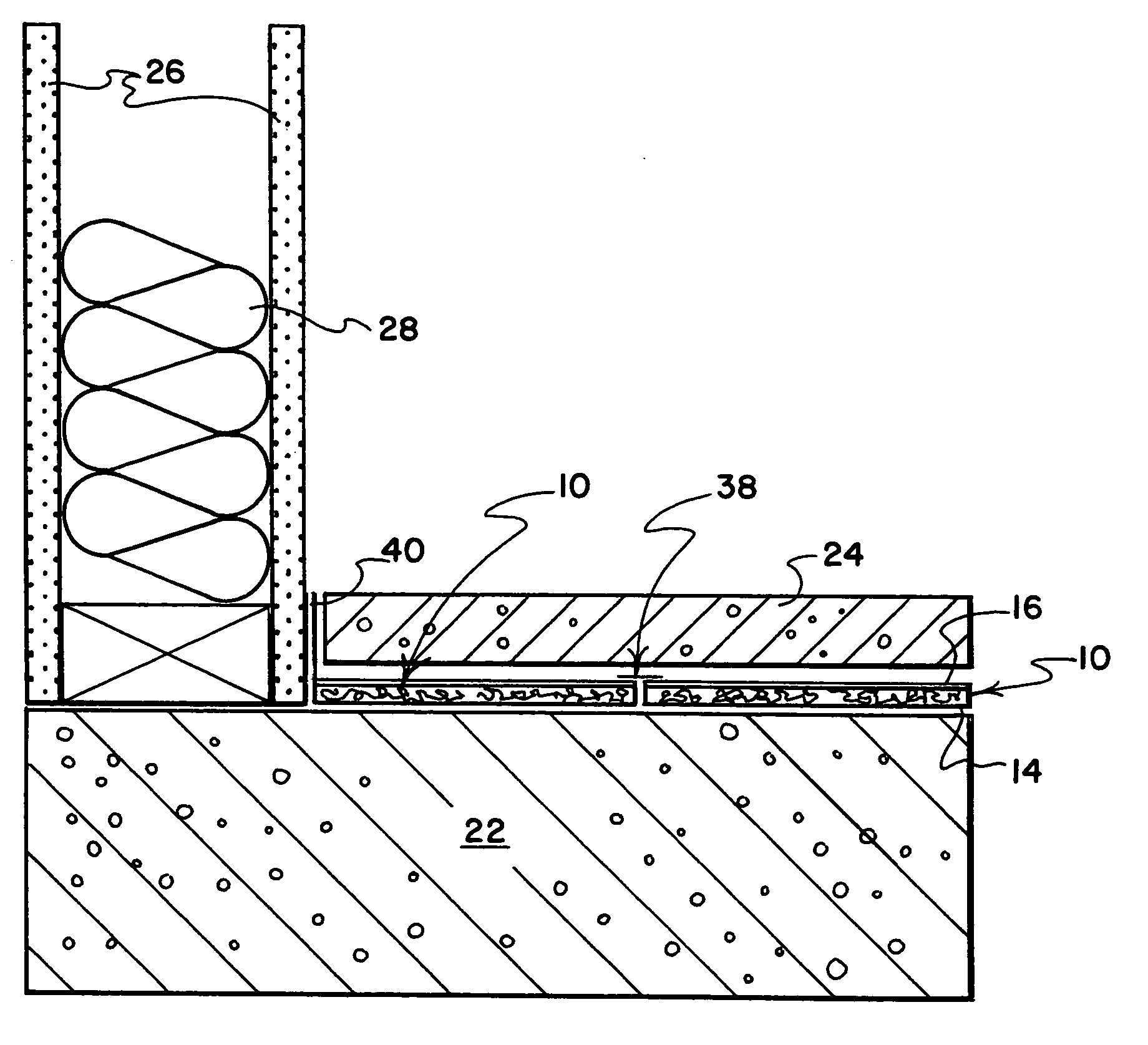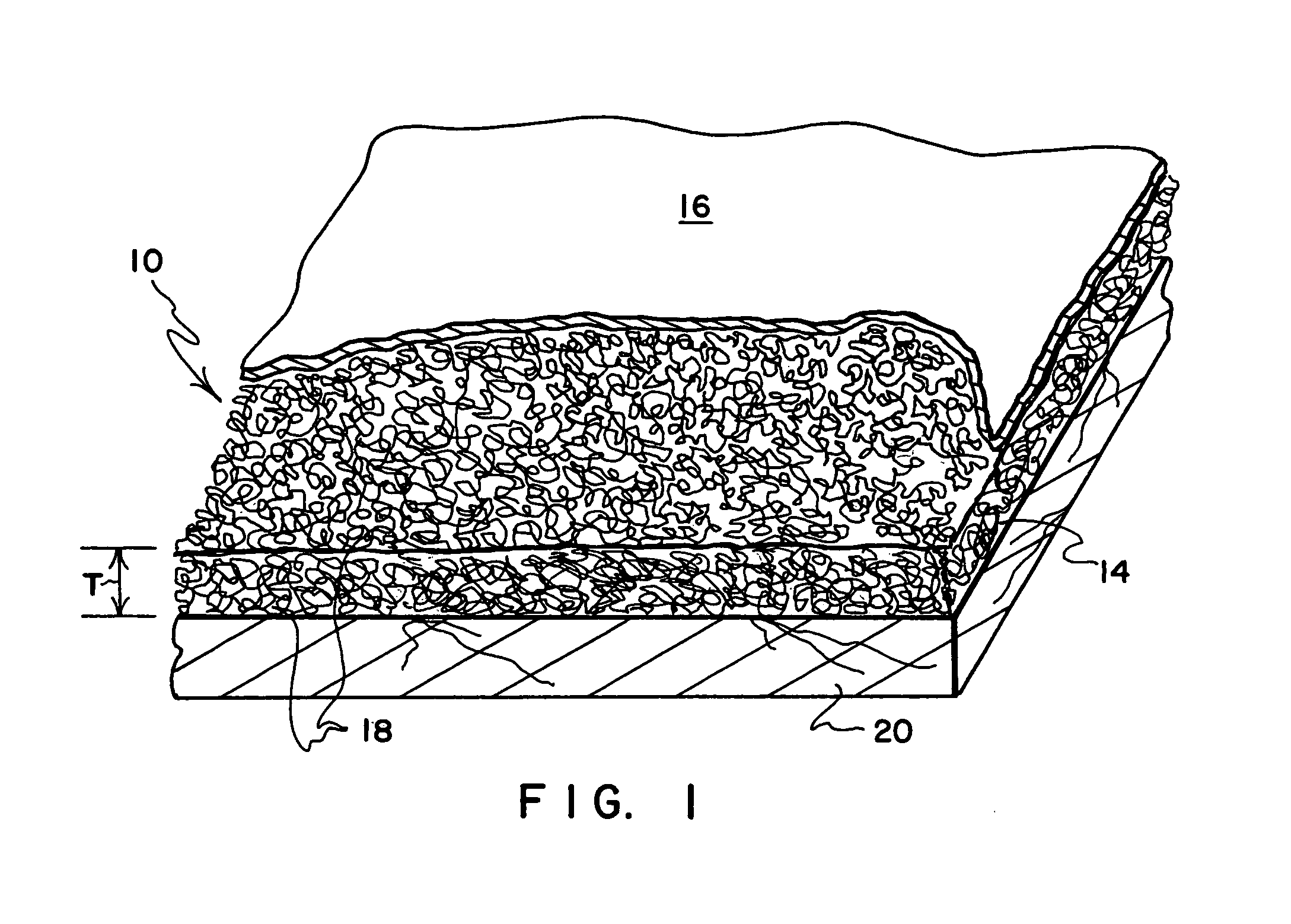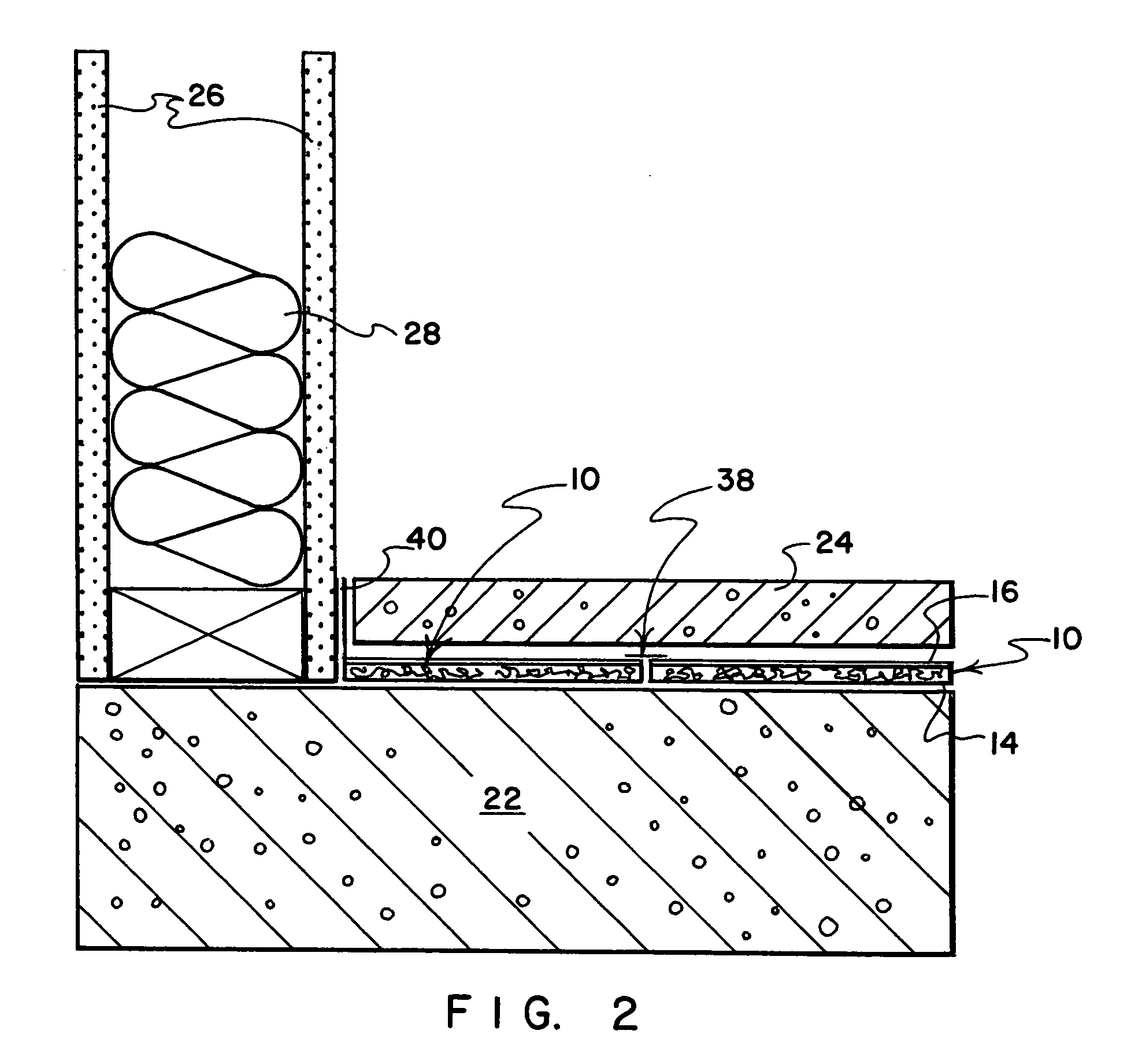Composite tangled filament mat with overlying liquid moisture barrier for cushioning and venting of vapor, and for protection of underlying subfloor
a technology of liquid moisture barrier and tangled filament, which is applied in the direction of resiliently mounted floors, building components, construction, etc., can solve the problems of deterioration of the subfloor, damage to other underlying structures including the ceilings of rooms located, and lengthen the time required, so as to reduce the noise transmission, cushion, dampen or absorb noise, and enhance the sound attenuation characteristics of floors.
- Summary
- Abstract
- Description
- Claims
- Application Information
AI Technical Summary
Benefits of technology
Problems solved by technology
Method used
Image
Examples
Embodiment Construction
[0016]Referring to the drawings, there is shown in FIG. 1 at 10 a composite structure that includes a mat 12 formed a tangled, intertwined array of filaments or fibers 14 that turn, twist and curl about at random, that intersect randomly, and that are bonded at random intersections or contact zones 18 as by heat bonding or other suitable bonding or connection technique, thereby to form the unit-handled mat / sheet composite 10.
[0017]The filaments or fibers 14 of the composite structure 10 may be of any suitably strong and mildew resistant polymeric material, including but not limited to polyethylenes, polypropylenes and other polyolefins; polyamides; polyvinyl chlorides; and other thermoplastic polymers, with the filaments being heat bonded or otherwise suitably connected where the filaments randomly intersect. The mat 12 may be made to any desired thickness, but for usual flooring purposes, a thickness “T” (see FIG. 1) on the order of about ¼ inch to about ¾ inch is sufficient to pro...
PUM
 Login to View More
Login to View More Abstract
Description
Claims
Application Information
 Login to View More
Login to View More - R&D
- Intellectual Property
- Life Sciences
- Materials
- Tech Scout
- Unparalleled Data Quality
- Higher Quality Content
- 60% Fewer Hallucinations
Browse by: Latest US Patents, China's latest patents, Technical Efficacy Thesaurus, Application Domain, Technology Topic, Popular Technical Reports.
© 2025 PatSnap. All rights reserved.Legal|Privacy policy|Modern Slavery Act Transparency Statement|Sitemap|About US| Contact US: help@patsnap.com



